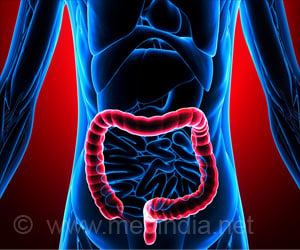- Potential Health Impact of Microplastics: A Review of Environmental Distribution, Human Exposure, and Toxic EffectsArticle link copied! - (https://pubs.acs.org/doi/10.1021/envhealth.3c00052)
- What are exposure pathways and health risks of microplastics in our body? - (https://www.downtoearth.org.in/waste/what-are-exposure-pathways-and-health-risks-of-microplastics-in-our-body--95840#)
About
Microplastics, the tiny particles you can’t see but are everywhere, have quietly infiltrated our oceans, soil, and even the air we breathe.
Due to their size and widespread use, microplastics can easily enter the human body through ingestion, inhalation, and dermal contact and have become a pervasive environmental concern due to their potential health risks. Their persistence in the environment means that they are now commonly found in food, water, and air(1✔ ✔Trusted Source
Potential Health Impact of Microplastics: A Review of Environmental Distribution, Human Exposure, and Toxic EffectsArticle link copied!
Go to source).
Microplastics can enter the body through the gastrointestinal tract, respiratory system, and skin. Once inside, they are not easily eliminated and can accumulate in various tissues. The body's inability to effectively process and remove these particles contributes to their accumulation and potential health risks.
Did You Know?
Microplastics can persist in the body and lead to serious long-term health issues. #microplastics #medindia
Long-Term Health Impacts of Microplastics Accumulation in the Body
Inflammation and Oxidative Stress
Microplastics can trigger inflammation and oxidative stress in body tissues, leading to significant long-term health issues. When microplastics enter the body, the immune system recognizes them as foreign invaders, triggering an inflammatory response. While inflammation is a natural defense mechanism, prolonged or chronic inflammation can cause extensive damage to cells and tissues(2✔ ✔Trusted Source
What are exposure pathways and health risks of microplastics in our body?
Go to source).
In addition to inflammation, microplastics can cause oxidative stress. This occurs when the balance between free radicals and antioxidants in the body is disrupted. Free radicals, generated by the presence of microplastics, can damage cellular components such as DNA, proteins, and lipids. Over time, oxidative stress can contribute to the development of chronic diseases, including cardiovascular conditions and certain cancers.
Suppression of the Immune System
Continuous exposure to microplastics has been shown to suppress the immune system. The immune system plays a critical role in defending the body against infections and diseases. However, when microplastics accumulate in the body, they can impair the function of immune cells, reducing the body's ability to fight off pathogens.
This suppression of the immune system can make individuals more susceptible to infections and may exacerbate existing health conditions. Moreover, a weakened immune system increases the risk of developing chronic diseases, as the body's defenses are compromised over time.
Increased Risk of Chronic Diseases
Long-term exposure to microplastics is associated with an increased risk of several chronic diseases. Some of the most concerning include:
Cancer: Microplastics may contribute to cancer development by causing genetic mutations and disrupting normal cellular processes. The presence of these particles in the body over time can lead to the initiation and progression of cancerous cells.
Reproductive Issues: Microplastics can interfere with the body's hormonal regulation, leading to reproductive health problems. This includes decreased fertility, altered menstrual cycles, and potential impacts on fetal development during pregnancy.
Neurological Disorders: Accumulation of microplastics in the brain is a growing concern. These particles may disrupt neural function, leading to cognitive impairments and an increased risk of neurological disorders such as Alzheimer's disease and Parkinson's disease.

Hormonal Disruption and Cellular Interference
Microplastics can act as endocrine disruptors, chemicals that interfere with the body's hormone systems. Hormones regulate a wide range of bodily functions, including metabolism, growth, and reproduction. When microplastics mimic or block natural hormones, they can cause significant imbalances.
This hormonal disruption can lead to various health conditions, including reproductive issues, developmental problems, and metabolic disorders. Additionally, microplastics can interfere with normal cellular processes, potentially leading to cellular damage and dysfunction.
Gastrointestinal Distress
Ingesting microplastics can cause gastrointestinal distress, which manifests as symptoms like bloating, discomfort, and altered bowel habits. The digestive system may struggle to process these foreign particles, leading to irritation and inflammation of the gastrointestinal lining.
Over time, the presence of microplastics in the digestive tract can contribute to chronic gastrointestinal issues, including irritable bowel syndrome (IBS) and inflammatory bowel disease (IBD). The accumulation of microplastics can also affect nutrient absorption, leading to potential deficiencies.
Impact on Gene Expression
Emerging research suggests that microplastics may influence gene expression, which refers to the process by which information from a gene is used to create proteins. Microplastics can interfere with the expression of genes involved in critical biological processes, potentially leading to various health conditions.
Changes in gene expression can have far-reaching effects, including the development of chronic diseases, impaired immune responses, and altered cellular function. Understanding the impact of microplastics on gene expression is crucial for assessing the long-term health risks associated with these particles.
The long-term accumulation of microplastics in the body poses significant health risks, including inflammation, oxidative stress, immune suppression, chronic diseases, hormonal disruption, gastrointestinal distress, and changes in gene expression. As microplastics continue to permeate our environment, understanding their health impacts is essential for developing strategies to mitigate exposure and protect public health.
Reducing the use of plastics, improving waste management, and supporting research into the health effects of microplastics are crucial steps in addressing this growing concern. By taking proactive measures, we can work towards minimizing the long-term health impacts of microplastics and ensuring a healthier future for all.
 MEDINDIA
MEDINDIA

 Email
Email







